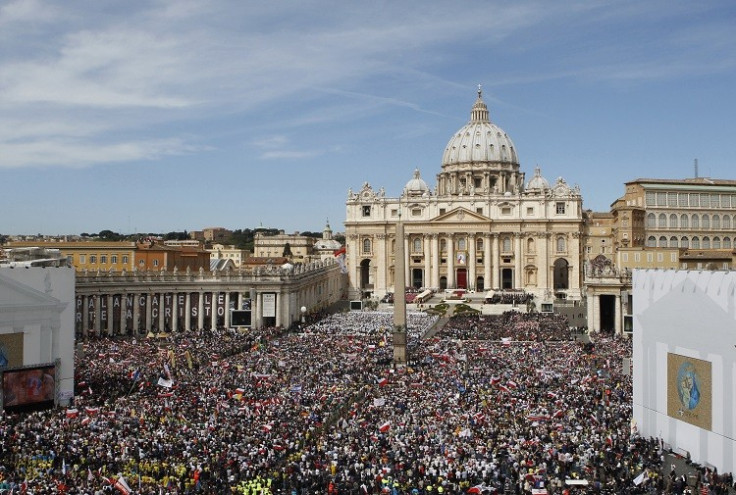John Paul II and John XXIII to Become Saints: The Canonisation Process Uncovered

As popes John Paul II and John XXIII will be declared saints this week, IBTimesUK looks at the canonisation process, according to the Roman Catholic Church's tradition.
There is a five-year waiting period after death before a cause for canonisation can begin. Pope Benedict XVI made an exception, however, as he requested the sanctification of John Paul II shortly after his death in 2005.
After the formal inquiry is opened, the person's "heroic virtues" have to be confirmed.
When the venerability of the candidate is verified, the ongoing pope beatifies the saint-to-be who acquires the new title of "blessed". With the beatification statement, the church declares it believes that the person is in heaven and has come to salvation.
In previous sainthoods, the process included a 'devil's advocate', who would challenge a person's sanctity. However, John Paul II eliminated this procedure in 1983.
Canonisation is the third and final step, with a candidate being formally declared a saint.
The canonisation ceremony - preceded by a prayer vigil the day before - is usually held on a Sunday morning around 10am.
The Pope presides over a Mass in St Peter's Square and formally declares the sainthood.
Two miracles are generally required for the canonisation. Pope John XXIII, however, was credited with just one miracle. He is believed to have cured a nun who doctors said was dying due to internal ailment.
The nun claimed she was healed after she had a vision of the pope, who told her she would recover.
The two miracles attributed to Pope John Paul II also regard two women. The first one is a French nun who claimed she was healed from incurable Parkinsons disease when she wrote the name of the pope on a piece of paper in 2007.
Four years later, a partly-paralysed woman, who had suffered from a severe brain aneurysm, claimed she was cured by John Paul II after she had a vision of him telling her to stand up and go to the kitchen to see her husband.
Martyrs who are killed for their faith can be declared saints without any proof of miracles.
After the canonisation,the saint is assigned a feast day, which does not necessarily appear on the general calendar or local calendars as an obligatory feast.
Parish churches may be built in honour of the new saint.
© Copyright IBTimes 2025. All rights reserved.






















